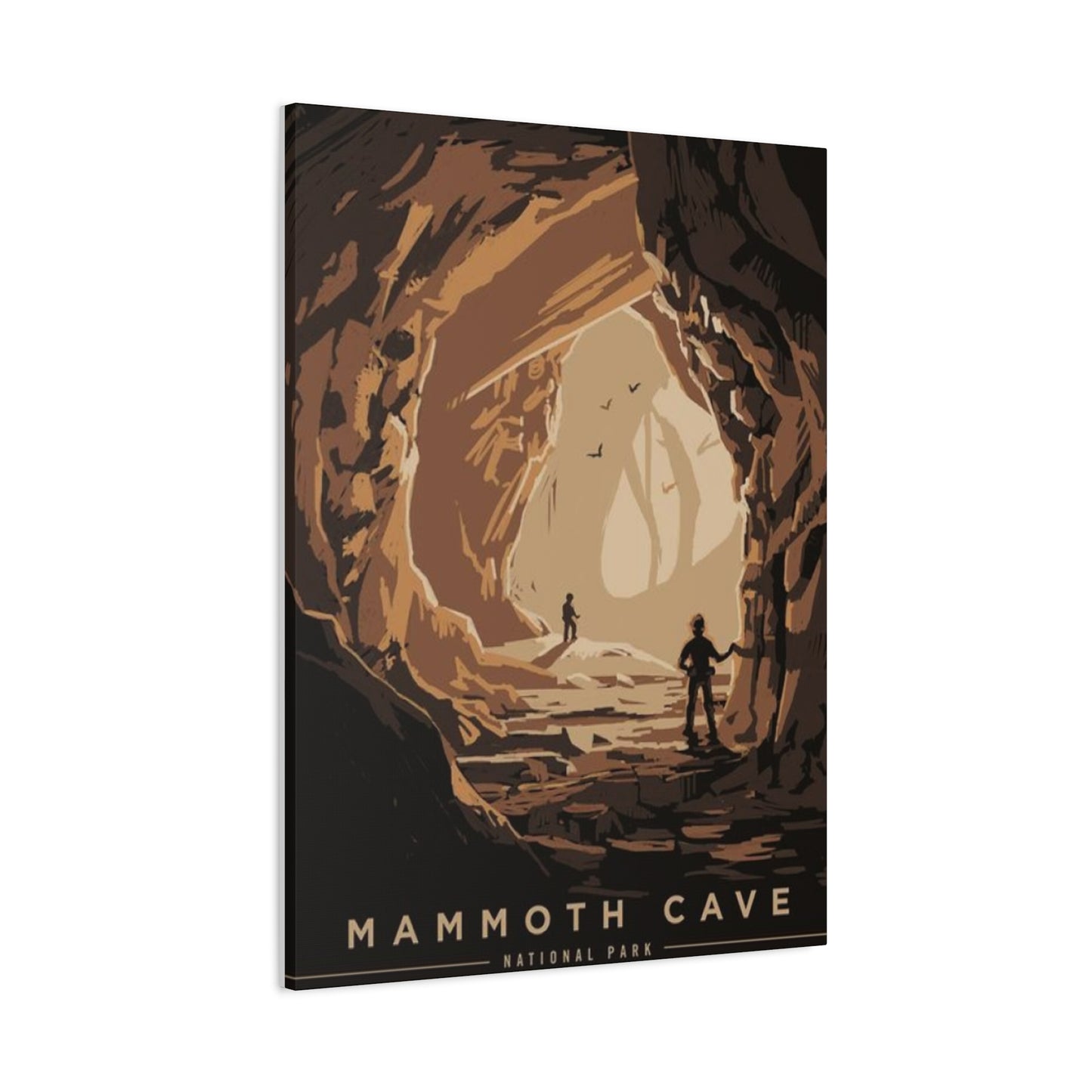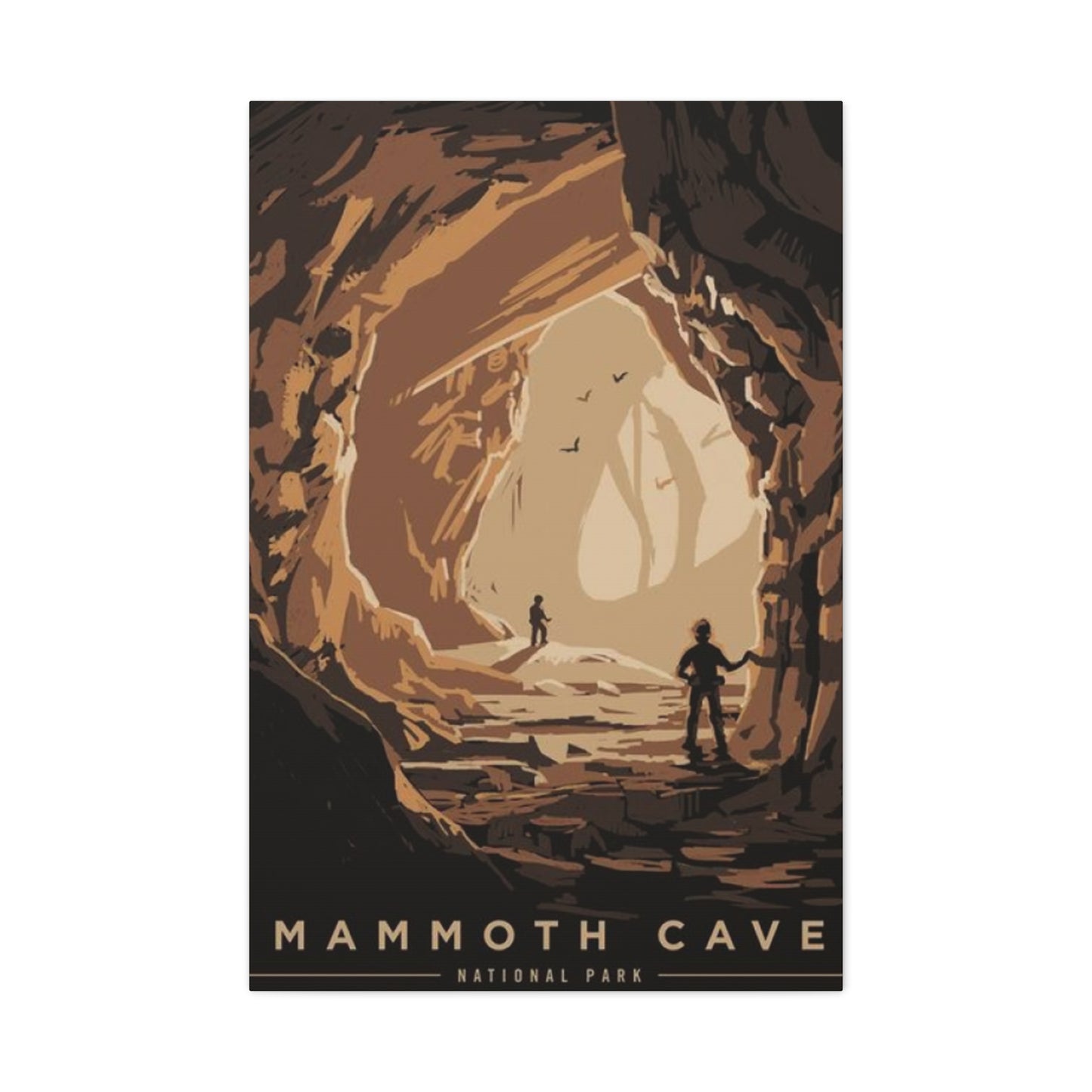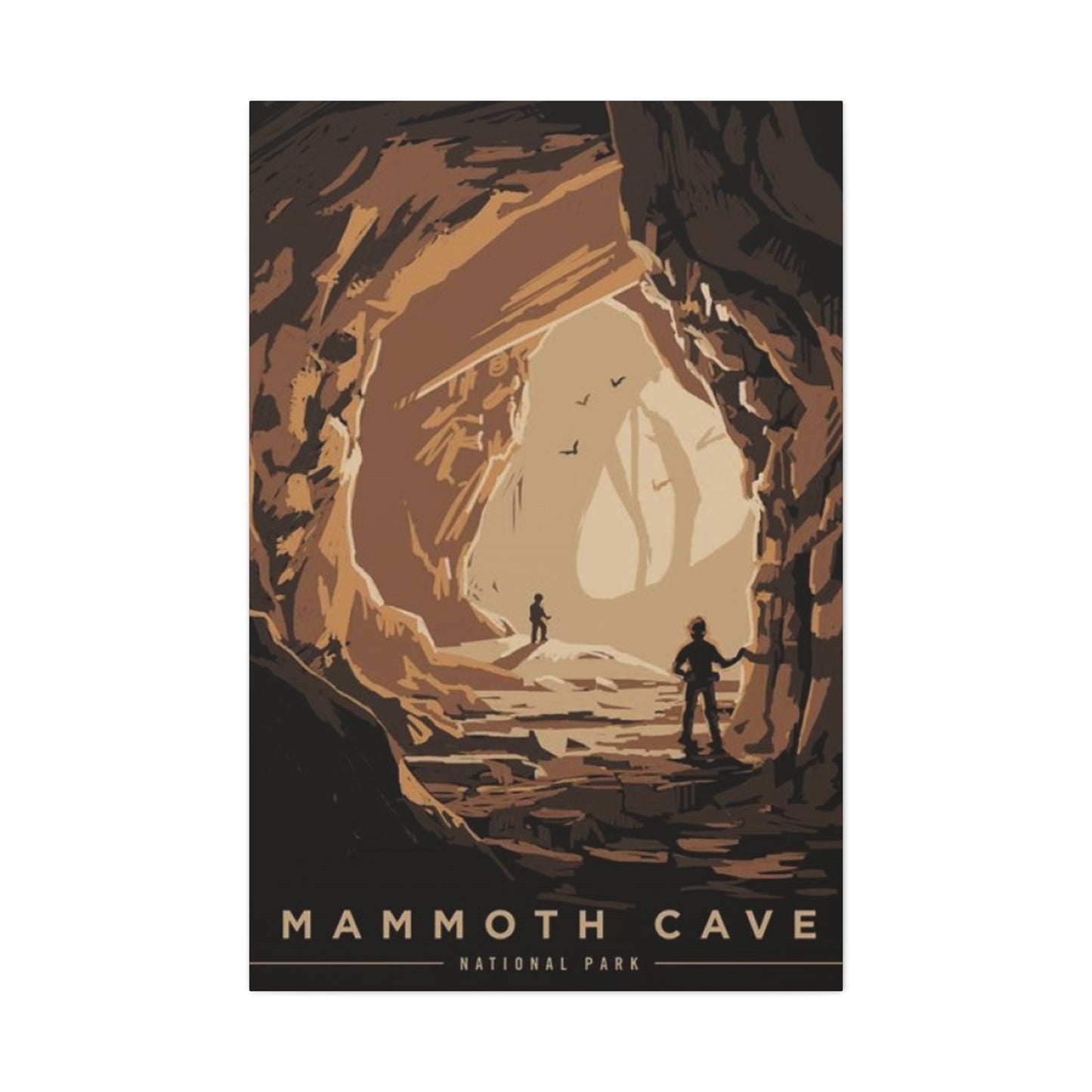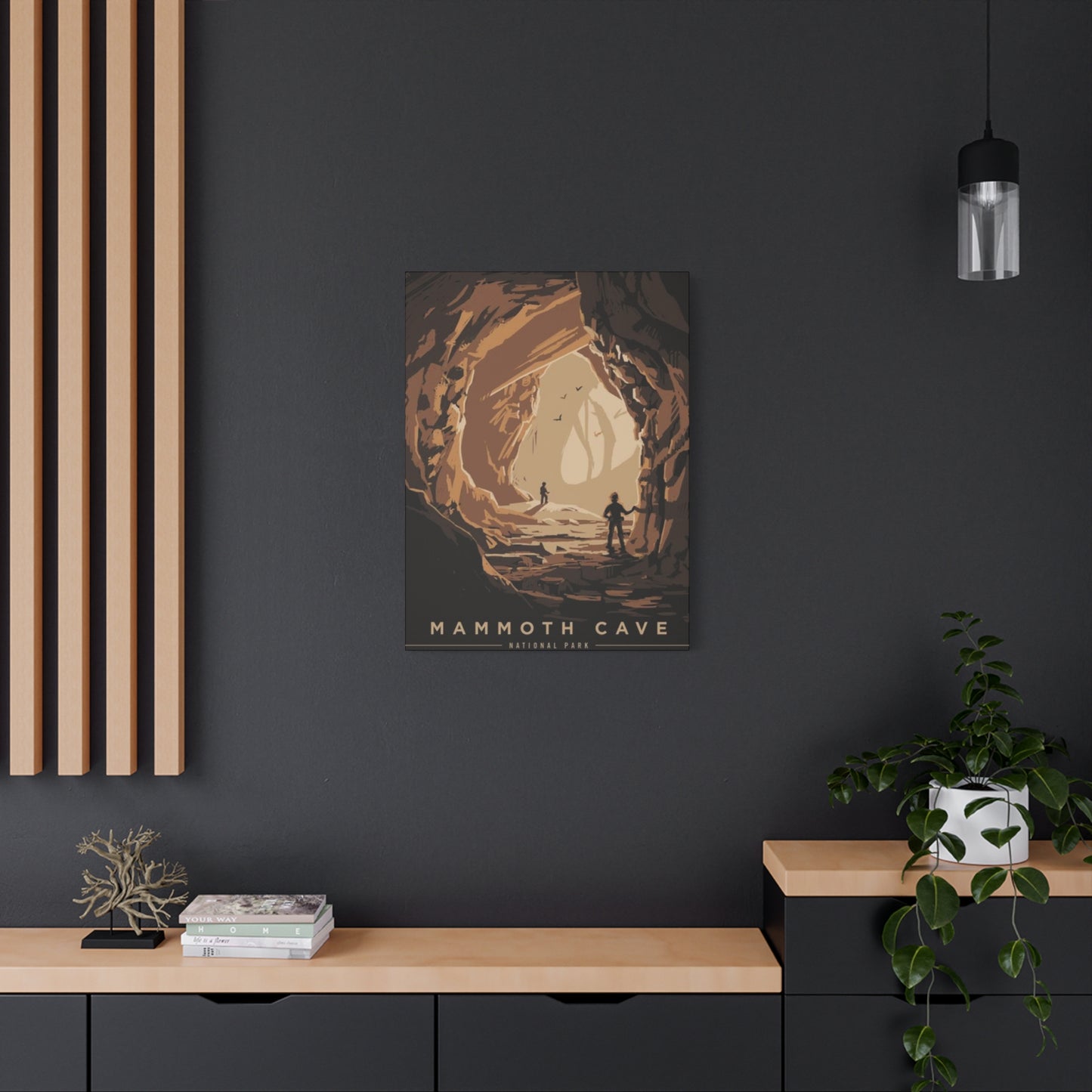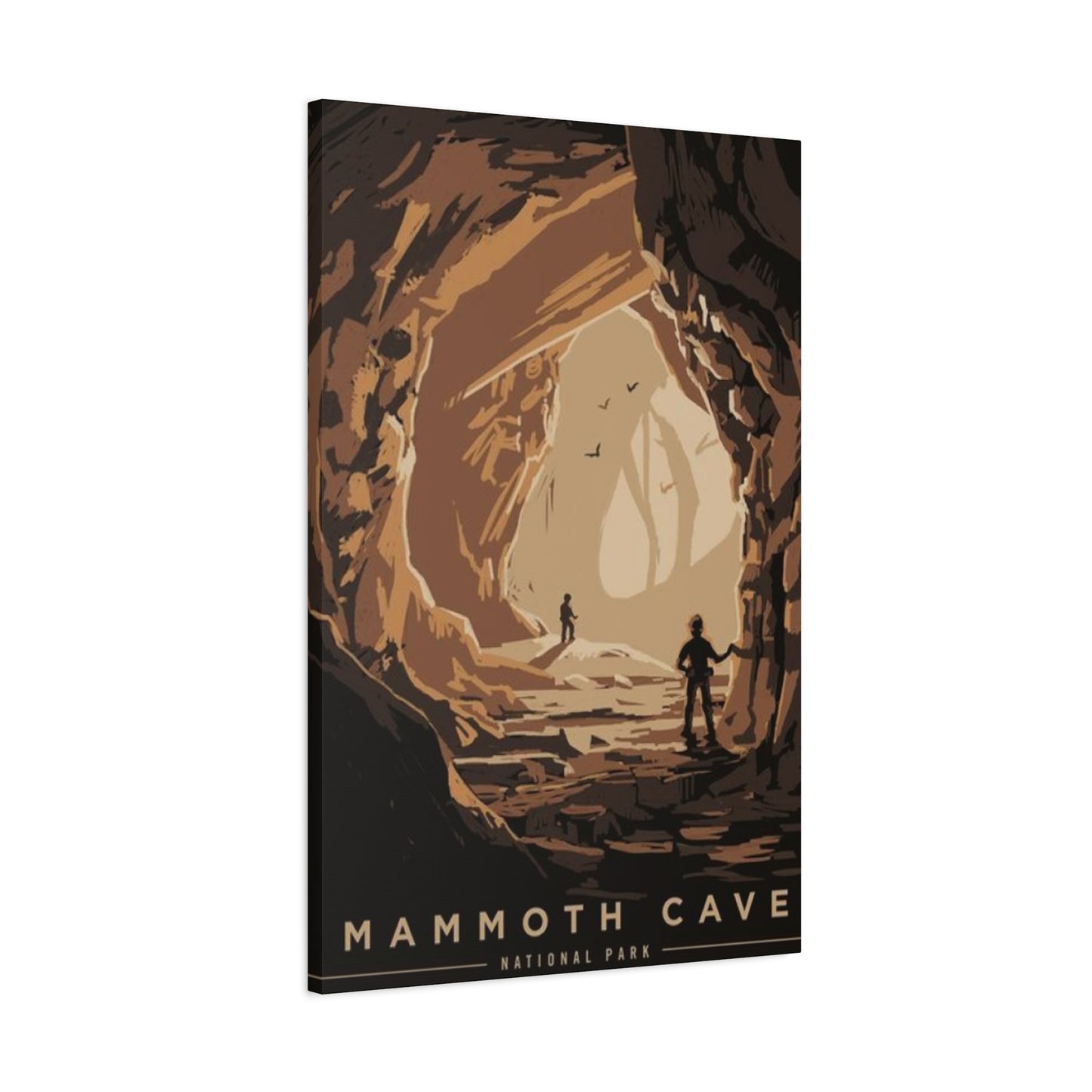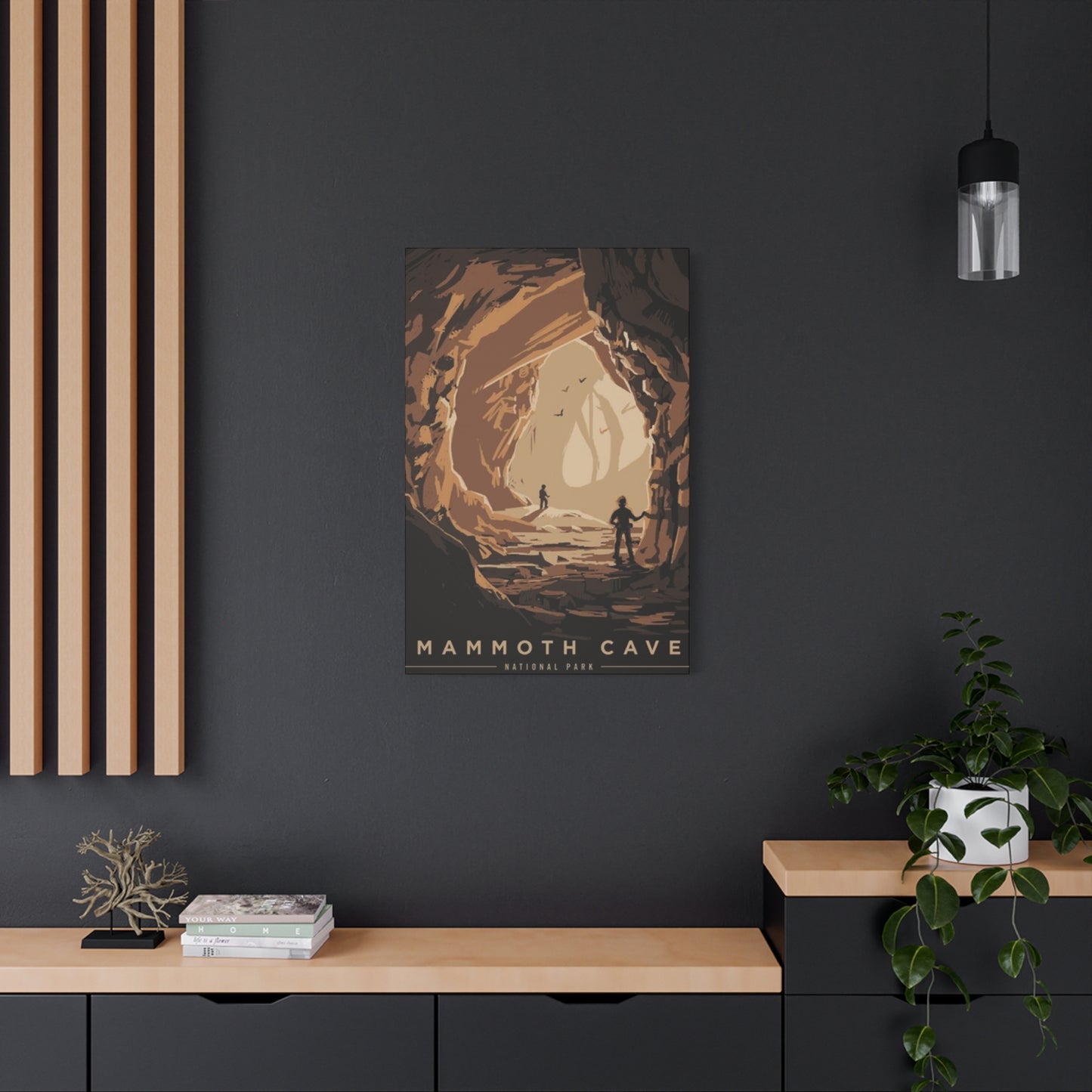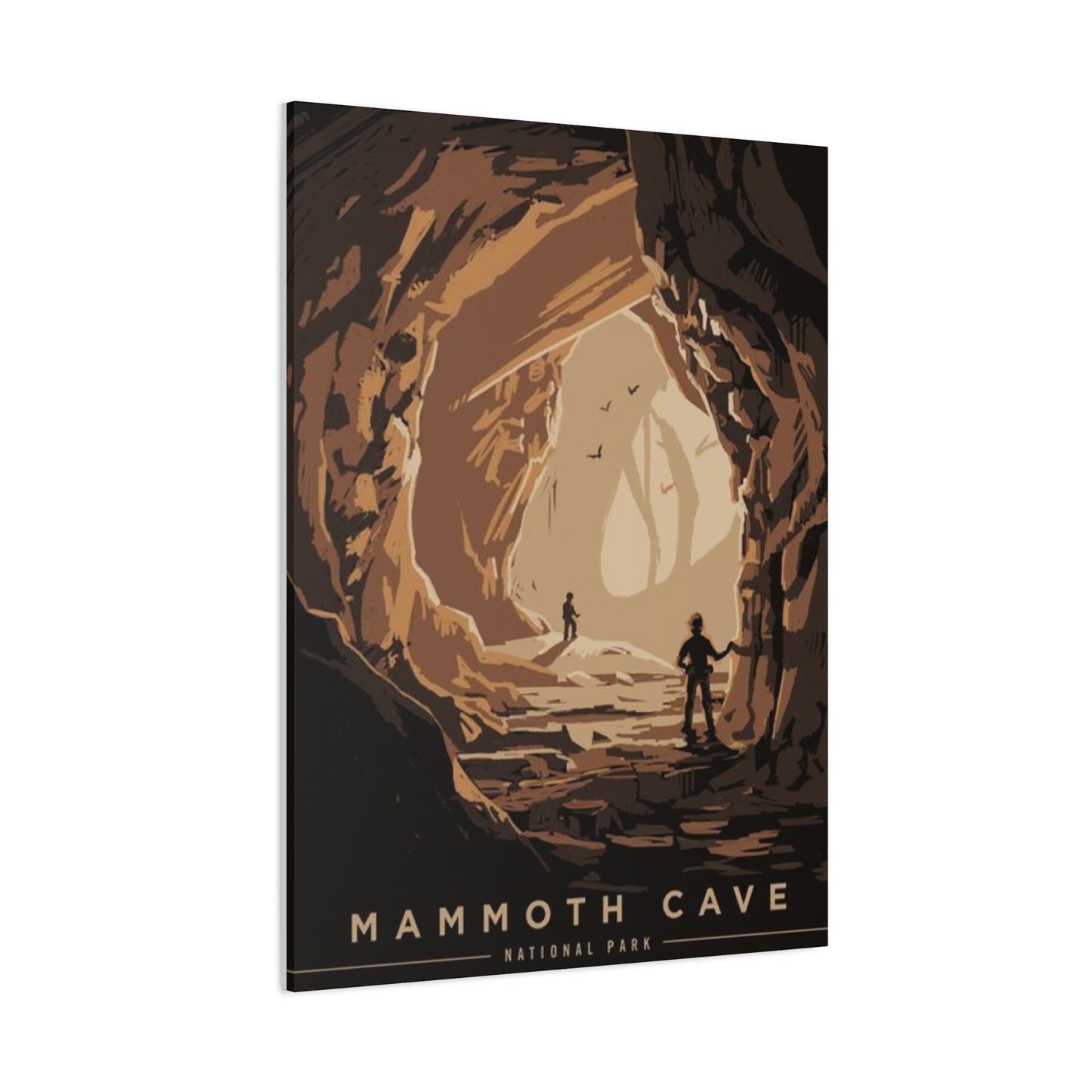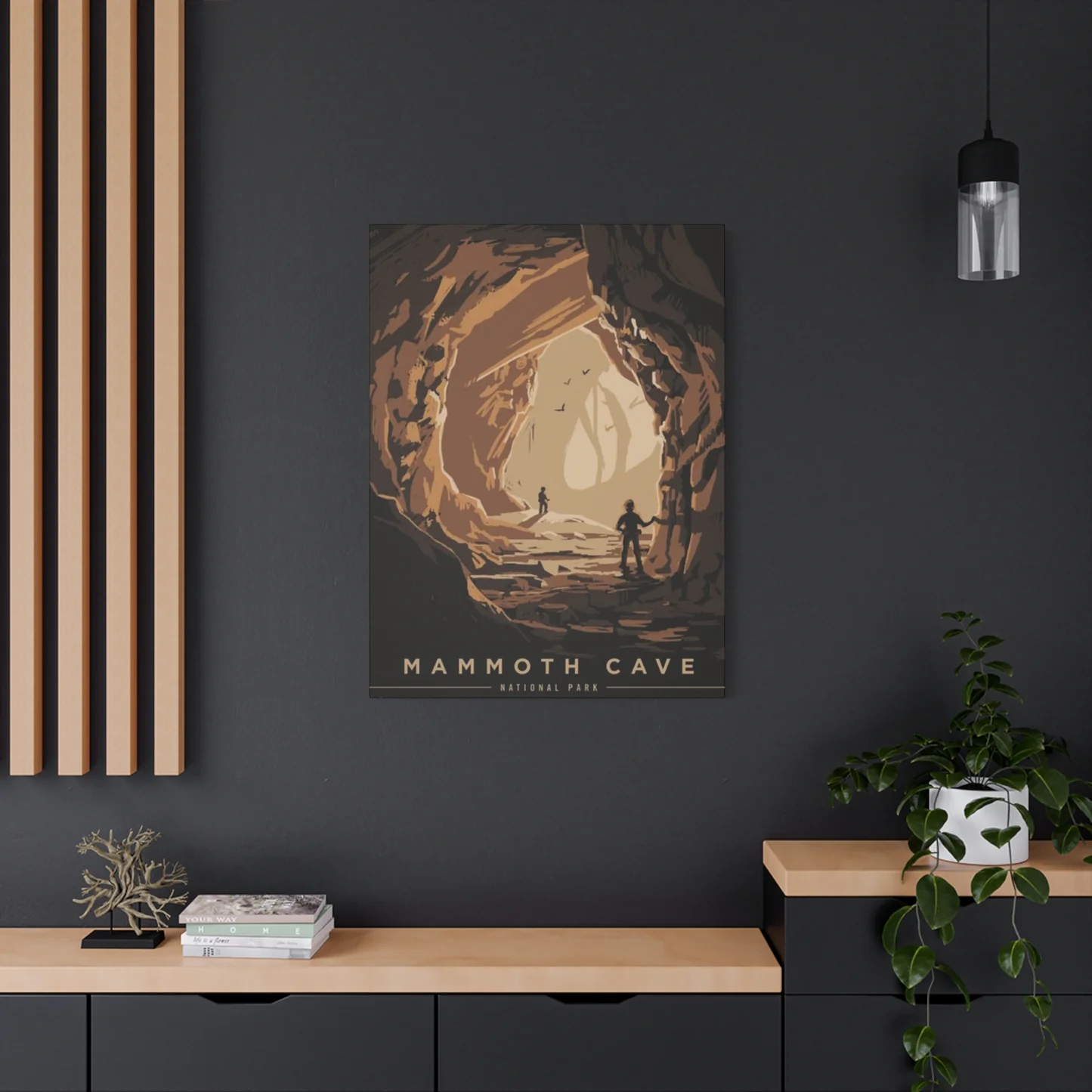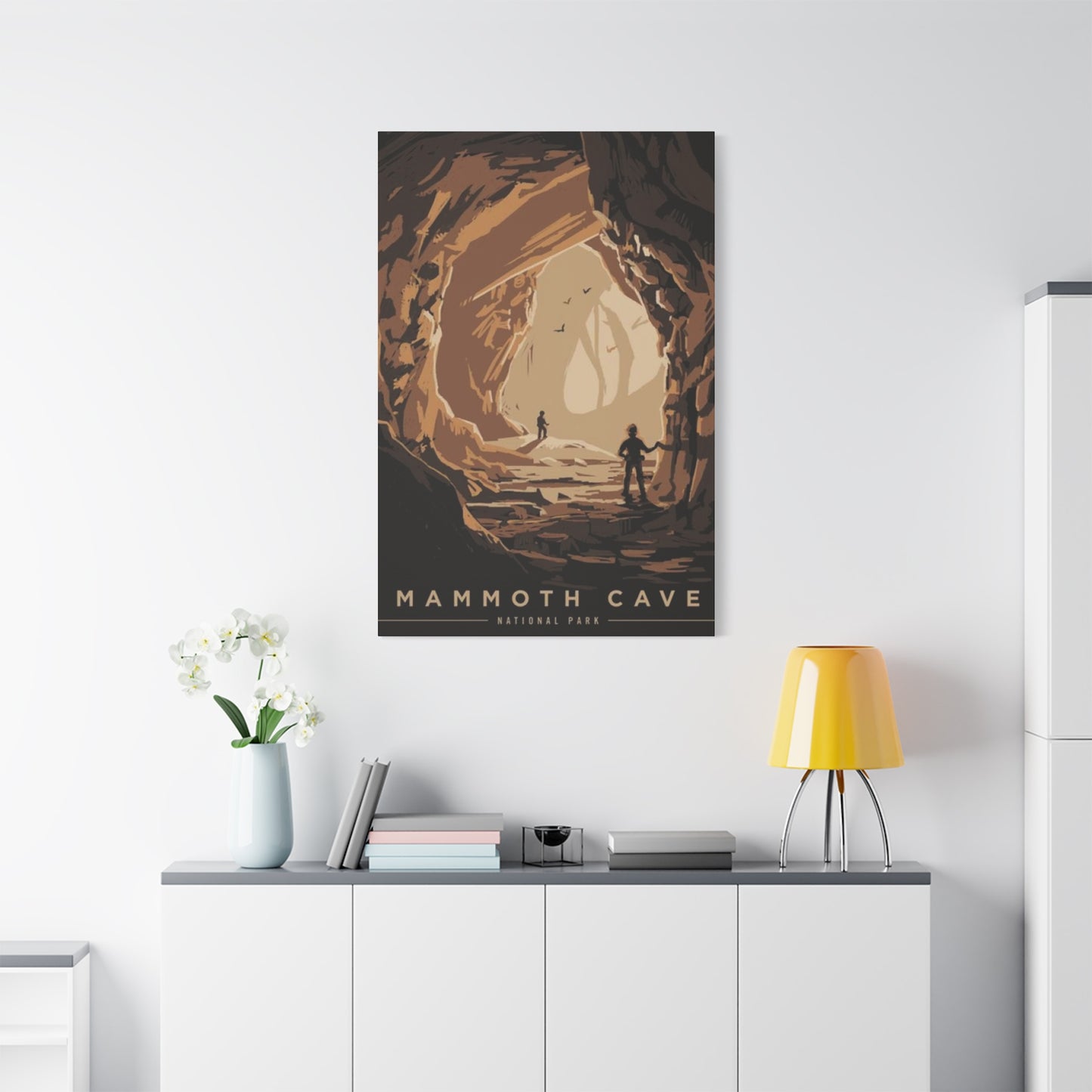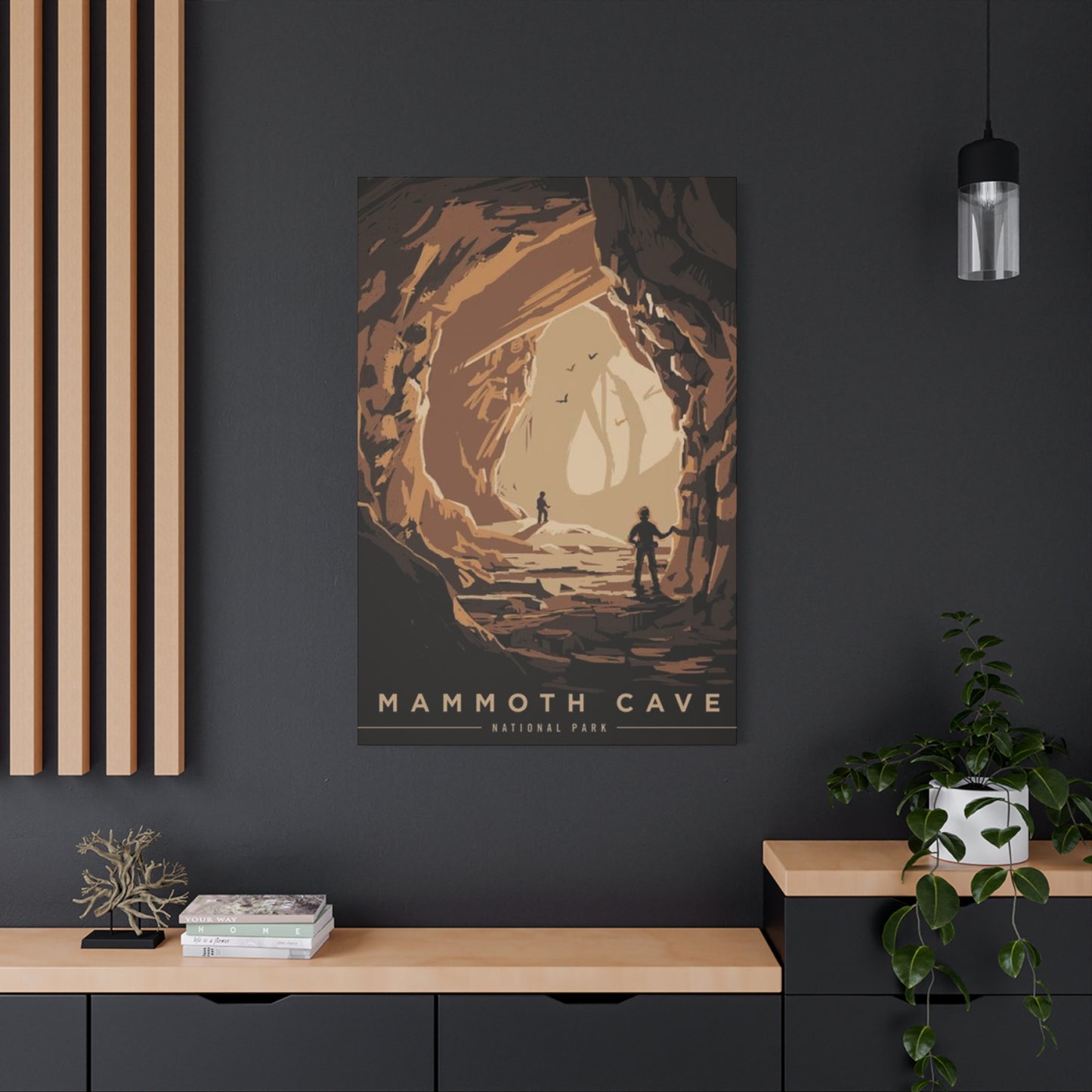Discover the Depths: Mammoth Cave National Park Wall Art for Nature-Inspired Interiors
The practical advantages of bringing outdoors inside through art rather than living plants or other natural elements include lower maintenance requirements and permanent visual impact. Living plants demand watering, sunlight management, and eventual replacement. Cave artwork requires only occasional dusting and provides consistent beauty without ongoing care. This reliability makes nature artwork particularly suitable for busy households, frequent travelers, or those lacking green thumbs.
Creating indoor environments that honor outdoor wilderness through artistic representation reflects values increasingly important to contemporary consumers. Environmental awareness, appreciation for preservation efforts, and desire to maintain connection with nature despite modern urban lifestyles—these values find expression through thoughtful selection and display of nature-based artwork including cave imagery.
Adventure Awaits: Mammoth Cave Wall Prints
The promise of future adventures makes cave wall prints particularly appealing to those planning explorations or dreaming of experiences not yet undertaken. These prints function as both inspiration and aspiration, reminding viewers of opportunities waiting beyond daily routines. The adventure-awaits concept transforms static decoration into dynamic motivation, creating psychological benefits beyond aesthetic pleasure.
Wall prints emphasizing adventure aspects often feature active elements: explorers navigating passages, challenging vertical sections requiring technical skills, or the moment of discovery when entering spectacular chambers. These action-oriented images communicate excitement and possibility rather than presenting caves as merely beautiful static environments. The implicit invitation to participate rather than just observe distinguishes adventure-focused prints from purely contemplative nature imagery.
The aspirational dimension of adventure-themed prints serves practical purposes. For those building outdoor skills, saving for expeditions, or planning future trips, wall prints provide visual goals that help maintain motivation during preparation periods. Looking daily at images of experiences you hope to have reinforces commitment to training, budgeting, and planning necessary for adventure fulfillment.
Adventure wall prints work particularly well in spaces associated with planning and preparation. Home offices where expedition logistics get organized, workout rooms where necessary physical conditioning occurs, or gear storage areas where equipment awaits use—these spaces benefit from visual reminders of why the work matters. The prints transform mundane preparation into meaningful steps toward exciting goals.
The variety within adventure-themed cave prints accommodates different experience levels and adventure styles. Accessible tourist cave images might inspire families planning first underground experiences. Technical vertical cave photography appeals to serious cavers pursuing challenging expeditions. Wild cave exploration imagery attracts those seeking off-trail, unimproved cave experiences. This range ensures everyone can find adventure representations matching their aspirations.
Social dimensions of adventure find expression in prints featuring groups of explorers. Cave exploration typically involves teamwork for safety and support, and imagery showing this collaborative aspect appeals to those valuing social connection alongside adventure. Such prints might resonate particularly with members of caving clubs, outdoor recreation organizations, or friend groups who regularly explore together.
National Park Wonders: Mammoth Cave Edition
Protected wilderness areas represent humanity's commitment to preserving natural heritage for future generations. Artwork celebrating these preserved spaces does more than decorate; it educates about conservation importance while honoring successful preservation efforts. When art specifically identifies protected locations, it creates opportunities to discuss preservation challenges, celebrate conservation victories, and inspire support for ongoing protection efforts.
The wonder inherent in designated park systems reflects both natural magnificence and human wisdom in protecting such places. Artwork commemorating these dual achievements—nature's creative power and human stewardship—carries deeper meaning than generic nature imagery. This added significance transforms simple decoration into statements of values and priorities that reflect well on those who display such pieces.
Educational dimensions accompany park-specific artwork naturally. Learning about designation histories, understanding what makes particular locations worthy of protection, appreciating ongoing management challenges—these knowledge elements enhance artwork enjoyment while building environmental literacy. Families particularly benefit from such educational decoration, which facilitates informal learning and might inspire children toward conservation interests.
Tourism connections make park-specific artwork valuable as both pre-trip anticipation builders and post-trip memory preservers. Planning a visit becomes more engaging when beautiful imagery already hangs in your home, building excitement and informing preparation. After visiting, that same artwork transforms into powerful memory trigger, instantly recalling sights, sounds, feelings from actual experience. This dual temporal function—future anticipation and past commemoration—distinguishes travel-related art from other decoration.
Wall Art for Cave Lovers and Explorers
Specialized audiences like cave enthusiasts require artwork meeting specific criteria beyond general aesthetic appeal. Authenticity matters tremendously—accurate representation of formations, proper equipment depiction, realistic portrayal of underground conditions. Generic or fantastical cave imagery might satisfy casual decorators but fails to resonate with those possessing firsthand knowledge and passionate interest in accurate representation.
Cave lover demographics span broad ranges, from casual tourists who've enjoyed commercial cave tours to hardcore technical cavers pursuing challenging expeditions. Artwork appealing to this diverse audience must balance accessibility with credibility, being beautiful enough for general appreciation while accurate enough for expert scrutiny. Achieving this balance separates quality cave art from superficial decoration.
The explorer mentality values discovery, challenge, and authentic engagement with wilderness. Artwork speaking to explorers emphasizes these themes through composition, subject selection, and presentation style. Images suggesting unvisited passages, depicting challenging navigation, or capturing the moment of discovering spectacular formations resonate particularly strongly with explorer psychology, validating their interest and inspiring continued pursuit.
Technical accuracy in explorer-focused artwork extends beyond formation appearance to equipment, clothing, and technique representation. Proper rope work, appropriate lighting equipment, correct safety gear—these details matter to knowledgeable viewers who notice and appreciate accuracy while finding errors distracting. Artists serving this audience must either possess firsthand experience or carefully research technical aspects to ensure credibility.
Community recognition enhances artwork value within cave enthusiast circles. Images from well-known photographers or artists respected within caving communities carry prestige that generic cave imagery cannot match. Display of recognized work signals membership in communities of appreciation, identifying homeowners as serious enthusiasts rather than casual decorators who happened upon cave themes.
Dark Beauty: Mammoth Cave Artwork
The aesthetic of darkness possesses unique appeal that lighter imagery cannot replicate. Dark beauty in cave artwork embraces shadows, mystery, and the dramatic contrast between illuminated features and surrounding obscurity. This aesthetic choice creates moody, atmospheric pieces that generate completely different emotional responses than bright, cheerful nature imagery while remaining grounded in natural reality rather than artificial gothic fantasy.
Darkness in cave art reflects actual underground conditions accurately. Caves exist in absolute darkness broken only by introduced light. Artwork embracing this reality creates authentic atmospheres that transport viewers imaginatively into underground environments. The darkness becomes not merely absence of light but active presence creating mood, suggesting mystery, and emphasizing the alien quality of subterranean worlds.
The beauty within darkness manifests through strategic illumination. In cave photography, headlamps, flash photography, or carefully placed continuous lighting reveals formations and features while allowing surroundings to remain dark. This selective revelation creates focal points and guides viewer attention while maintaining overall dark atmosphere. The interplay between light and dark becomes the fundamental aesthetic element driving visual impact.
Psychological responses to dark beauty differ significantly from reactions to conventional pretty landscapes. Where bright nature scenes might evoke happiness, energy, or comfort, dark cave imagery generates intrigue, contemplation, and sophisticated appreciation. These darker emotional tones suit certain spaces and moods better than cheerfulness, particularly in studies, libraries, meditation spaces, or bedrooms where calm introspection serves better than stimulation.
The beauty-in-darkness theme connects to broader gothic and romantic aesthetic traditions valuing mystery, antiquity, and the sublime. Cave imagery taps into these established artistic movements while remaining grounded in natural reality. This connection to artistic tradition elevates cave art beyond simple nature photography into conversation with centuries of aesthetic philosophy.
Technical execution challenges in dark beauty artwork require mastery of both capture and presentation. Photographers must retain detail in shadow areas while preventing highlights from overwhelming. Printers must reproduce subtle gradations in dark tones without crushing shadows to pure black. Framers must select materials that complement rather than fight the dark aesthetic. Each technical element requires careful attention to preserve artistic vision through entire chain from creation to final display.
Mammoth Cave National Park in Artistic Detail
Detail-oriented artwork celebrating this protected wilderness serves dual purposes: aesthetic beauty and educational documentation. When artists focus on capturing intricate details rather than sweeping overviews, they reveal aspects that casual observation might miss. This detail-focused approach creates imagery rewarding sustained viewing, where new elements emerge through careful study rather than all information presenting instantly.
Artistic detail in cave imagery might showcase formation micro-structures: the crystalline appearance of actively growing stalactites, the rippled texture of flowstone surfaces, the delicate hollows in porous limestone. These close perspectives require technical skill to capture and present clearly while maintaining aesthetic appeal. The resulting artwork fascinates those interested in geological processes while providing visually rich decoration.
The national park designation ensures protection of details that might be damaged in unmanaged caves. Artwork documenting these protected details serves preservation by demonstrating what's being conserved and why protection matters. Visual education about formation fragility and growth timescales supports conservation messaging more effectively than text alone, making detail-focused artwork valuable beyond its aesthetic contributions.
Photographic detail requires technical excellence in capture and reproduction. High-resolution cameras, quality lenses, proper lighting, and stable mounting all contribute to capturing genuine detail rather than mere appearance of detail. Similarly, printing must utilize technologies capable of reproducing fine detail without softening or artifacting. This technical chain from capture through display determines whether detail-focused artwork succeeds in its goals.
Artistic detail in painted or drawn cave imagery demonstrates observational skill and dedication. Artists must study subjects carefully, understanding underlying structures rather than merely copying superficial appearance. This deep observation produces artwork with authenticity that resonates even with viewers lacking technical knowledge to articulate why particular pieces feel more real than others.
The detail-focused approach creates opportunities for educational annotation. Labels identifying formation types, explanatory text describing processes, or even artistic cutaway views showing internal structures transform simple decoration into informal museum displays. This educational enhancement particularly suits family homes, schools, or nature centers where learning objectives complement aesthetic goals.
Explore the Depths Through Wall Art
Virtual exploration through artwork provides accessible alternatives or supplements to physical travel. For those unable to visit remote caves due to distance, mobility limitations, or financial constraints, quality imagery offers windows into environments they might never physically experience. This accessibility democratizes appreciation while serving the valuable function of allowing beauty to reach wider audiences than physical visitation alone permits.
The exploration metaphor transforms passive viewing into active engagement. Rather than simply looking at pretty pictures, viewers mentally explore depicted spaces, imagining themselves within the chambers, considering what lies beyond visible areas, and connecting current view to potential larger contexts. This imaginative engagement creates more meaningful interaction than passive aesthetic consumption generates.
Progressive exploration through curated artwork collections can mirror actual cave exploration sequences. Beginning with entrance scenes, moving through various passage types, encountering different formation varieties, and culminating in spectacular chambers—such progression creates narrative structure that enhances collection coherence while educating about cave development and typical exploration experiences.
The depth metaphor works literally and figuratively. Literally, cave artwork depicts underground depths beneath surface landscapes. Figuratively, quality pieces possess depth of meaning, technical execution, and educational content that rewards sustained engagement. This multilayered depth creates artwork that remains interesting through years of daily viewing rather than becoming visually exhausted through familiarity.
Exploration through wall art enables preparation for actual visits. Studying images beforehand familiarizes viewers with what they might encounter, reducing anxiety for first-time cave visitors while building anticipation. Post-visit, the same artwork helps process and preserve memories, extending the experience beyond brief physical presence. This temporal bridge connecting before, during, and after actual exploration adds value beyond simple beauty.
The educational dimension of exploration-themed artwork teaches about cave formation, ecology, history, and conservation without didactic lecturing. Visual learning through quality imagery imparts information naturally, making education enjoyable rather than laborious. This approach particularly suits informal settings like homes where overt educational messaging might feel inappropriate.
Technical exploration elements—rope work, navigation strategies, equipment usage—appear in some artwork, providing instruction alongside inspiration. Those planning to advance from tourist caves to wild cave exploration can learn from images depicting proper techniques and equipment, building knowledge that supports safer, more successful expeditions.
Natural History Meets Home Decor
The intersection of scientific interest and aesthetic beauty creates powerful synergy in cave-themed decoration. Natural history—the systematic study of natural objects and organisms—traditionally belongs to museums and educational institutions. Bringing natural history into homes through thoughtful decoration educates while beautifying, serving dual purposes that justify investment more completely than single-purpose items.
The natural history perspective emphasizes accuracy, context, and educational value alongside visual appeal. Artwork approached from this angle might include information about formation ages, growth processes, or ecological significance. This informative dimension distinguishes natural history decoration from purely aesthetic pieces, creating more meaningful and engaging home environments.
Cave formations represent natural history spanning geological timescales incomprehensible to human experience. Individual formations may be hundreds of thousands or even millions of years old, having grown with patient slowness while entire civilizations rose and fell above. Displaying imagery of such ancient features connects us to deep time, providing perspective on human temporal existence that counters the presentism of modern life.
The meeting of natural history and decor reflects broader cultural trends toward authenticity and meaning in consumer choices. Rather than settling for generic decoration chosen solely for color coordination or style matching, many people now seek pieces with genuine significance, authentic origins, and educational dimensions. Cave artwork serves these values excellently when properly selected and presented.
Curatorial approaches from museum display can inform home decoration choices. Creating cohesive themes, providing context through labels or accompanying information, arranging pieces to tell stories or demonstrate relationships—these museum practices translate well to home settings, elevating decoration to purposeful curation. This intentional approach creates more satisfying environments than random accumulation of individually appealing pieces.
Children particularly benefit from natural history decoration in homes. Growing up surrounded by images of geological wonders, accompanied by age-appropriate information, builds early scientific literacy and environmental appreciation. This informal education happens naturally through exposure rather than requiring structured teaching, making it particularly effective for developing lifelong interests.
Iconic Mammoth Cave Scenes for Your Walls
Certain views within this protected system have achieved iconic status through repeated photography and artistic interpretation. These signature scenes represent the system in collective imagination much as specific vistas represent various national parks or natural wonders. Displaying iconic scenes connects your home to shared cultural knowledge while celebrating legitimately spectacular features deserving their famous status.
Iconic status emerges through combination of genuine beauty and accessibility. The most photographed formations typically appear on popular tours where many visitors encounter and capture them. This broad exposure builds familiarity that elevates particular features to representative status, making them visual shorthand for the entire system. Displaying such imagery immediately communicates to knowledgeable viewers which location you're celebrating.
The challenge with iconic scenes involves balancing familiarity with freshness. Because these views have been captured countless times, truly exceptional work requires finding new perspectives, unusual lighting, or unique compositional approaches. The best artists working with iconic subjects bring fresh vision that honors what makes scenes special while adding personal interpretation preventing images from feeling like simple reproductions of countless similar shots.
Personal connection to iconic scenes often stems from actual visits. Standing in front of famous formations creates memories that specific artwork can trigger powerfully. Displaying images of formations you've personally encountered generates stronger emotional response than equally beautiful images of places you've never visited. This personal connection transforms iconic imagery from generic to deeply meaningful.
Educational value accompanies iconic scene artwork naturally. These famous features often have names, stories, and geological significance worth knowing. Displaying such imagery creates opportunities to share information about why particular formations matter, what makes them special, and how they've been protected. This educational function adds value beyond simple aesthetics.
The iconic quality makes such artwork particularly suitable for gifts. Someone who's visited the system will likely recognize and appreciate imagery of famous formations they encountered. Even those who haven't visited might recognize iconic views from research or anticipation of future trips. This broad accessibility makes iconic scene artwork relatively safe gift choices compared to more obscure or abstract pieces.
Market availability of iconic scene imagery ranges from inexpensive mass-produced posters to exclusive limited edition prints from recognized artists. This range accommodates various budgets while allowing collectors to upgrade over time. Beginning with affordable versions of iconic scenes, then replacing with higher quality interpretations as budgets allow, represents a common collecting progression.
Celebrate Nature's Majesty with Cave Art
The celebratory purpose of nature artwork acknowledges that decoration can serve purposes beyond simple beautification or space-filling. Celebration implies joy, appreciation, and recognition of significance. When we celebrate nature's majesty through art display, we participate in cultural traditions honoring natural beauty while personally expressing values and priorities through our environment creation choices.
Nature's majesty manifests in cave systems through scale, antiquity, beauty, and the sense of encountering creation largely untouched by human modification. These majestic qualities inspire awe—that complex emotion mixing wonder, admiration, and humility before something vastly greater than ourselves. Artwork successfully capturing this awe communicates beyond simple beauty, connecting viewers to profound experiences and emotions.
The celebratory approach to display differs from casual decoration. Celebration suggests intentionality, prominence, and respect for subject matter. This might manifest through professional framing, prime wall placement, careful lighting, and perhaps accompanying information helping viewers understand what's being celebrated and why. Such thoughtful presentation honors both artwork and subject.
Cultural celebrations of nature through art have ancient roots in cave paintings, landscape traditions, and religious artistic practices. Contemporary nature art continues these traditions while adapting to modern contexts and technologies. Understanding this cultural continuity adds depth to personal decoration choices, connecting contemporary practice to human artistic heritage spanning millennia.
The majesty element requires adequate scale for full impact. While intimate smaller pieces have their place, truly capturing majestic chamber views or towering formations typically requires substantial size. Large format prints or paintings create impact matching subject grandeur, effectively communicating the awe-inspiring nature of actual environments.
Celebration through artwork can extend to personal milestones associated with natural places. Perhaps you visited during a significant life event, achieved a challenging exploration goal, or shared the experience with important people. Displaying related artwork celebrates these personal dimensions alongside natural beauty, creating layered meaning that generic decoration cannot match.
The act of selecting, purchasing, framing, and hanging nature artwork itself constitutes celebration. The time, money, and attention invested signal that subjects matter enough to merit such investment. This celebratory process creates personal connection to artwork beyond passive consumption, ensuring pieces carry meaning reflecting the effort invested in their acquisition and presentation.
Mammoth Cave Prints for Rustic Interiors
Rustic design aesthetics emphasize natural materials, traditional craftsmanship, and connection to outdoor environments. Cave prints naturally complement these design values, offering imagery grounded in nature while depicting spaces that feel authentically wild rather than cultivated. The organic forms, earth-tone colors, and sense of untamed nature in cave imagery harmonize beautifully with rustic interior approaches.
Material selection for rustic display contexts might include reclaimed wood frames, rough-hewn mounting boards, or natural-edge wooden platforms. These materials echo cave imagery's emphasis on stone, water, and organic formation while supporting sustainable design values common in rustic aesthetics. The framing and mounting become part of the artistic statement rather than mere functional necessities.
Rustic interiors typically feature exposed beams, stone fireplaces, wood plank walls, and other elements referencing traditional construction and natural materials. Cave prints complement these features by adding visual interest while maintaining thematic consistency. The geological subject matter relates naturally to stone fireplace surrounds, while earth tones coordinate with wood elements.
The authenticity valued in rustic design extends to artwork selection. Rustic enthusiasts typically prefer genuine photography or traditional artistic techniques over digital manipulations or heavily processed images. This preference aligns well with cave photography, which often succeeds through straightforward documentation of genuine beauty rather than requiring elaborate artificial enhancement.
Scale considerations in rustic spaces often favor substantial pieces that hold their own against prominent architectural features. Large format cave prints balance exposed beams, massive stone fireplaces, or open-concept spaces with high ceilings. These larger pieces prevent artwork from being overwhelmed by architectural elements while creating focal points that organize visual attention.
The rustic emphasis on handcrafted quality extends to artwork selection criteria. Prints from individual artists or small studios carry more appeal than mass-produced items, even when imagery might be similar. The story behind acquisition—purchased directly from artist, discovered in park visitor center, commissioned specially—matters in rustic contexts where provenance and authenticity hold value.
Cabin and lodge settings particularly benefit from cave artwork, which extends the outdoor-indoor connection central to such spaces. When rustic structures serve as bases for outdoor recreation, cave imagery joins other adventure and nature themes creating comprehensive celebrations of outdoor lifestyle. The artwork becomes part of adventure narrative rather than isolated decoration.
Cave Walls to Living Room Walls
The conceptual translation from literal cave walls to metaphorical living room walls represents a fascinating transformation. What exists as three-dimensional stone surface deep underground becomes two-dimensional representation in comfortable domestic space. This translation requires artistic skill to preserve essence while adapting to completely different context and viewing conditions.
The journey from cave walls to home walls involves multiple transformations. Photographers or artists must first perceive and capture scenes in challenging underground conditions. Images must then be processed, printed, and mounted appropriately for home display. Finally, owners must select placement and presentation that allows artwork to succeed in domestic contexts vastly different from original environments. Each transformation stage presents opportunities for both success and failure.
Metaphorically, bringing cave walls to living room walls represents broader human desires to incorporate nature into domestic spaces. We cannot bring actual caves indoors, but we can bring carefully crafted representations that trigger memories, inspire imagination, or satisfy aesthetic preferences. This symbolic incorporation serves psychological needs for nature connection alongside practical decorating requirements.
The contrast between rough, wet, dark cave walls and smooth, dry, well-lit home walls creates interesting design tension. Artwork can emphasize this contrast or attempt to minimize it. Emphasizing contrast creates drama and highlights how art transforms experience. Minimizing contrast might involve lighting choices, framing styles, or placement decisions that make artwork feel as natural in homes as original subjects feel in caves.
Technical considerations in this translation include color management ensuring home-displayed prints match underground reality despite vastly different viewing conditions. Colors that appear certain ways under headlamp or flash in caves might look completely different under home lighting. Skilled photographers and printers manage these technical challenges to create prints that feel authentic while being optimized for typical home viewing situations.
The emotional translation matters as much as technical accuracy. Cave walls evoke mystery, adventure, and connection to deep geological time. Successfully translated living room displays should trigger similar emotions despite safer, more comfortable contexts. This emotional continuity separates truly successful cave art from mere pretty pictures of underground spaces.
Personal connection strengthens when living room displays recall actual cave wall encounters. Someone who's touched particular formations, navigated specific passages, or experienced awe in certain chambers will feel deeper resonance with imagery depicting those exact locations. This personal history transforms generic cave images into profound memory triggers.
Underground Adventure Captured in Paint
While photography dominates contemporary cave imagery, painted interpretations offer unique qualities that mechanical reproduction cannot match. Paintings represent individual artistic vision filtered through personal skill, style, and interpretation. This human mediation creates different viewing experiences than photography provides, often emphasizing particular aspects while subordinating others according to artistic priorities.
Paint medium selection affects final results significantly. Oil paints allow rich colors, subtle gradations, and extensive reworking, ideal for achieving depth and atmosphere in cave scenes. Watercolors provide luminosity and transparency that can beautifully suggest moisture, translucency, and light effects. Acrylics offer versatility and durability, working well for various styles from realistic to abstract. Each medium brings distinct qualities that influence final artistic statements.
The adventure element in painted cave artwork often manifests through compositional choices suggesting movement, discovery, or exploration. Painters can exaggerate perspectives, enhance dramatic lighting, or simplify complex scenes to emphasize adventurous aspects. This interpretive freedom allows painted works to communicate emotional truths about exploration that realistic photography might not capture as effectively.
Traditional painting techniques connect contemporary cave art to centuries of landscape painting tradition. Painters allure of subterranean landscapes has captivated human imagination for centuries, and few places embody this fascination more profoundly than the world's longest known cave system. When we transform these magnificent underground spaces into visual representations for our living environments, we create a unique bridge between the raw power of geology and the comfort of modern homes. This comprehensive exploration delves into every aspect of bringing these extraordinary underground vistas into your personal space through artistic interpretation.
The popularity of nature-inspired interior design has surged dramatically in recent years, with homeowners and decorators seeking authentic connections to the natural world. Among the most compelling themes emerging in this movement is the representation of geological wonders, particularly those hidden beneath the earth's surface. These artistic pieces serve multiple purposes: they educate, inspire wonder, commemorate visits, and provide conversation-starting focal points that reflect personal interests and values.
Understanding the appeal of these artistic representations requires appreciating both the scientific significance and aesthetic beauty of underground formations. The interplay of light and shadow, the dramatic scale of chambers, the intricate patterns of mineral deposits, and the sense of timeless mystery all contribute to creating visually striking imagery. When translated into wall decorations, these elements bring an adventurous spirit and connection to natural history into any room.
Mysteries of Mammoth Cave on Canvas
The enigmatic qualities of the world's most extensive cave system provide endless inspiration for artistic interpretation. When artists approach this subject matter, they capture not just the physical appearance of limestone corridors and vast chambers, but the profound sense of mystery that permeates these spaces. Every brushstroke or photographic composition attempts to convey the ineffable quality of standing in darkness punctuated only by lamp light, surrounded by formations that took millennia to develop.
Canvas artwork featuring these underground scenes offers a traditional yet versatile medium for home decoration. The texture of canvas itself complements the rough, organic nature of cave walls, creating a harmonious relationship between medium and subject. Artists working in this format often employ techniques that emphasize depth and atmosphere, using layered applications of paint to suggest the multiple chambers receding into darkness, or the way moisture glistens on ancient stone surfaces.
The mysterious atmosphere of subterranean environments translates exceptionally well to visual art because it engages the viewer's imagination. Unlike landscape paintings of familiar outdoor scenes, cave imagery presents spaces that most people will never personally experience. This unfamiliarity creates an opportunity for artists to interpret rather than simply reproduce, infusing their work with personal vision while remaining true to the geological reality of these formations.
When selecting canvas pieces that capture this mysterious quality, look for works that balance recognizable cave features with atmospheric elements. The most effective pieces often include dramatic lighting that highlights specific formations while allowing shadows to suggest unseen depths. This approach mirrors the actual experience of cave exploration, where headlamps reveal stunning details while the surrounding darkness hints at vast, unexplored spaces.
The scale of canvas works significantly impacts their ability to convey mystery. Larger pieces can immerse viewers, creating the sensation of peering into an actual cave entrance or standing within a massive chamber. Smaller works might focus on intimate details—a single formation, the pattern of mineral deposits on a wall, or the play of light on water pooling on stone—inviting closer inspection and contemplation.
Natural Wonder: Mammoth Cave Wall Decor
Representing one of nature's most spectacular achievements through wall decoration brings the grandeur of geological time into contemporary living spaces. The formations found in this underground system represent thousands upon thousands of years of patient mineral deposition, water flow, and chemical processes. When we display artistic interpretations of these natural wonders, we create daily reminders of the planet's creative power and the vast timescales over which natural beauty develops.
Wall decor celebrating these natural wonders serves educational purposes alongside aesthetic ones. Children growing up with such images develop early appreciation for geology, natural history, and environmental conservation. Adults benefit from regular visual reminders of the world's diversity and the importance of preserving such irreplaceable places for future generations. This educational dimension distinguishes nature-based wall decor from purely decorative pieces.
The variety of wall decor options allows for creative integration into diverse interior design schemes. Traditional framed prints work beautifully in formal settings, while canvas wraps suit more contemporary or casual spaces. Metal prints offer durability and a modern edge, their reflective surfaces adding dimension that complements the natural shine of moisture-coated cave formations. Wood-mounted images create rustic appeal, perfect for cabins, lodges, or homes embracing natural materials.
Selecting wall decor that truly captures the wonder of these natural formations requires attention to quality and authenticity. High-resolution photography reveals the intricate details that make cave formations so captivating: the delicate striations in flowstone, the crystalline sparkle of mineral deposits, the organic curves of stalactites and stalagmites. Artists' renderings should demonstrate knowledge of geological processes, avoiding fantastical exaggerations that undermine the inherent wonder of actual formations.
The presentation format significantly influences impact. Single large-scale pieces command attention and create focal points, ideal for prominent walls in living rooms or offices. Multi-panel installations can tell visual stories, perhaps showing progression deeper into cave systems or showcasing different types of formations. Gallery walls mixing various cave images create museum-like displays that work particularly well in hallways, studies, or dedicated nature-themed rooms.
Lighting considerations become especially important when displaying cave-themed wall decor. These subjects naturally involve dramatic contrasts between light and dark, and improper lighting can diminish this crucial element. Directional spotlights can enhance dimensional pieces, while diffused lighting prevents glare on photographic prints. Some enthusiasts install subtle backlighting to create an ethereal effect, making framed pieces seem to glow from within, mimicking the experience of lamp light in actual caves.
Cave Exploration Art for Adventure Homes
For individuals who define themselves through outdoor pursuits and adventurous spirits, cave exploration art provides perfect expression of personal identity through home decor. These pieces speak to those who value experiences over possessions, yet want their living spaces to reflect their passion for discovery and challenge. Adventure-themed homes benefit enormously from imagery that captures the thrill, beauty, and physical engagement of exploring underground wilderness.
The aesthetic of adventure homes typically emphasizes authenticity, functionality, and connection to the outdoors. Cave exploration art fits seamlessly into this context, offering visual interest that doesn't feel contrived or merely decorative. These aren't generic nature scenes but specific representations of places that require effort, courage, and commitment to experience firsthand. This specificity resonates with adventure enthusiasts who appreciate the difference between casual outdoor appreciation and serious exploration.
Imagery options for adventure-focused cave art often include human elements that traditional landscape pieces avoid. Explorers with headlamps navigating tight passages, climbers ascending rope in vertical chambers, or groups gathered around formation in cathedral-sized rooms add narrative dimension and scale reference. These human presences make the art more relatable for fellow adventurers while emphasizing the experiential aspect of cave exploration rather than treating caves as static landscapes.
The technical aspects of cave exploration—rope work, lighting equipment, protective gear—appear in some artistic interpretations, adding documentary authenticity. These details appeal particularly to serious cavers who recognize and appreciate the accuracy, creating instant connection and credibility. However, artists must balance technical accuracy with aesthetic appeal, ensuring that equipment doesn't overwhelm the natural beauty that makes caves worth exploring.
Adventure homes often feature multiple complementary elements creating cohesive themes. Cave exploration art works beautifully alongside rock climbing imagery, mountaineering photographs, river expedition memories, and other outdoor adventure documentation. Creating visual dialogue between different adventure types—vertical exploration above and below ground, wilderness navigation in various environments—builds rich, layered storytelling throughout the home.
Material choices for adventure home cave art should reflect the rugged, practical aesthetic. Durable materials that withstand the wear of active lifestyles make sense: metal prints resistant to moisture and impact, canvas with protective coatings, reclaimed wood frames that complement the outdoors-indoors connection. These practical considerations don't compromise aesthetic quality but rather enhance authenticity, suggesting that beautiful decoration needn't be precious or delicate.
Mammoth Cave's Hidden Beauty in Prints
The transitioning of underground splendor into printed format requires technical expertise and artistic sensitivity to preserve the delicate details that make cave formations so captivating. Print technology has advanced dramatically, enabling reproduction quality that previous generations couldn't imagine. Modern printing processes capture subtle color gradations, intricate textural details, and the critical contrast ranges that define compelling cave imagery.
High-quality prints celebrating these hidden beauties utilize various technical approaches depending on source material and desired effect. Photographic prints from digital files employ advanced color management to ensure accurate reproduction of often-challenging lighting conditions. Giclée printing with archival inks on premium papers or canvas creates museum-quality results that resist fading and deterioration. Metal sublimation printing offers vibrant colors and unique reflective qualities that add dimensionality to cave images.
The hidden beauty concept particularly applies to cave formations that remain inaccessible to most people. Many spectacular formations exist in protected areas or require technical skills to reach safely. Prints democratize access to these wonders, allowing appreciation without endangering fragile ecosystems or requiring specialized training. This accessibility fulfills important conservation and educational functions while providing stunning decor options.
Detail revelation represents one of printing's greatest advantages for cave imagery. The human eye in dark cave environments, even aided by artificial light, cannot perceive the complete range of detail that long-exposure photography or carefully composed artistic renderings can capture. Prints freeze these moments of comprehensive visibility, allowing viewers to study formations at leisure, noticing details they might miss even during actual cave visits.
Size flexibility in print format accommodates various spatial and design requirements. Massive prints several feet across create dramatic focal points suitable for large walls in spacious rooms. Medium prints work beautiously in groupings, perhaps showing different formations or various chamber within the same system. Small prints offer affordable entry points for collectors or work well in intimate spaces like powder rooms, hallways, or nook areas that benefit from visual interest without overwhelming.
The hidden beauty theme extends beyond obvious formations to include subtle phenomena: the delicate crust of cave pearls, the hair-thin soda straws hanging from ceiling, the microscopic crystalline structures visible only in extreme close-up. Prints specializing in these macro perspectives offer unique alternatives to wide-angle chamber shots, revealing worlds within worlds that epitomize the concept of hidden beauty.
Limited edition prints appeal to collectors and those seeking exclusive pieces. Numbered series from respected photographers or artists carry value beyond mere decoration, representing legitimate artistic achievements worthy of investment. Limited availability creates scarcity that enhances desirability while ensuring that your home displays something genuinely special rather than mass-produced decoration.
Dark Depths, Bright Walls: Mammoth Cave Art
The dramatic contrast between the profound darkness of underground environments and the illuminated walls of our homes creates compelling design tension. This juxtaposition emphasizes how art transforms and transfers experiences, taking something inherently dark and mysterious and presenting it as bright, accessible beauty. The philosophical implications of this transformation add intellectual depth to what might otherwise be simple decoration.
Artwork embracing this dark-to-bright concept often plays deliberately with contrast, featuring deep shadows and brilliant highlights that recreate the visual drama of underground exploration. The darkest passages and chambers become the darkest areas of artwork, while formation illuminated by lamp light or flash photography glow with captured luminescence. This high-contrast approach creates visually striking pieces that command attention and create focal points in any room.
The psychological impact of dark-themed art on bright walls deserves consideration. While some might assume dark imagery creates somber or oppressive feelings, properly executed cave art actually generates opposite effects. The darkness represents adventure, mystery, and natural wonder rather than negativity. The fact that this darkness appears on bright, comfortable walls in secure homes creates pleasant cognitive dissonance—safe engagement with themes of danger and unknown.
Technical execution of dark-depths imagery challenges artists and photographers to maintain detail in shadow areas while preventing bright areas from overwhelming. The best pieces reward close inspection, revealing subtle details in seemingly black passages or complex patterns in highlighted formations. This technical achievement demonstrates artistic skill while creating engaging viewing experiences that unfold over time rather than delivering all information instantly.
Bright wall presentation enhances the artwork's impact through proper background selection. White or light-colored walls provide maximum contrast, making dark cave images pop dramatically. This approach works particularly well in modern or minimalist spaces where bold visual statements against clean backgrounds create sophisticated effects. Alternatively, darker wall colors can create gallery-like settings where artwork seems to float in space, reducing environmental distraction and focusing attention entirely on the images.
The bright-walls concept extends to lighting design surrounding cave artwork. Strategic illumination transforms static images into dynamic displays that change throughout the day or evening. Morning natural light might cast soft shadows across framed prints, while evening spotlights create theatrical emphasis. Adjustable lighting allows homeowners to control mood and emphasis, basically curating their own miniature exhibitions.
Color temperature considerations affect how dark cave art presents on bright walls. Cool, daylight-balanced lighting preserves color accuracy and creates crisp, clean presentations. Warmer lighting adds intimacy and comfort, softening the potentially dramatic impact of high-contrast imagery. Some enthusiasts install multiple lighting options, adjusting color temperature to match time of day, season, or desired atmosphere.
Majestic Mammoth Cave National Park Art
Celebrating protected wilderness through artistic representation supports conservation while providing sophisticated home decoration. When these pieces specifically reference designated park land, they carry additional meaning as tributes to successful preservation efforts and reminders of shared natural heritage. This connection to specific protected places adds layers of significance beyond generic natural beauty.
The majesty of this particular system—its record-breaking length, its diverse formations, its rich history—provides abundant material for artistic interpretation. Artists and photographers working in this location draw upon not just physical beauty but also the weight of being in a place recognized internationally for its significance. This sense of importance, of gravitas, infuses the best artwork and distinguishes it from generic cave imagery.
Official park-related artwork often includes subtle identifying elements: specific named formations, recognizable chambers, or contextual information in titles or descriptions. These identifiers matter to those who've visited personally, creating powerful nostalgia and memory triggers. They also interest those planning future visits, offering previews that build anticipation while educating about what makes this particular system special.
The diversity of scenes available within this single protected area allows collectors to focus entirely on one location while still building varied, interesting collections. Different seasons offer different experiences underground, though temperature and appearance remain remarkably constant. Different tours and areas showcase distinct formation types and chamber characteristics. This variety within unity appeals to focused collectors who prefer depth over breadth in their thematic approach.
Supporting artists who work officially or semi-officially with protected areas aligns with conservation values. Many such artists donate portions of proceeds to preservation efforts or educational programs. Purchasing their work thus becomes a form of indirect support for the places depicted, satisfying both aesthetic desires and ethical imperatives. This feel-good factor adds satisfaction beyond the simple pleasure of beautiful decoration.
The majestic quality inherent in this system demands presentation that matches its significance. Large-format pieces, professional framing, prominent placement—these choices honor the subject matter and create appropriate visual impact. Treating such artwork casually or relegating it to minor spaces wastes the opportunity to let its inherent majesty enhance your environment fully.
Historical context enriches appreciation of park-focused artwork. Understanding discovery stories, formation ages, and preservation battles adds depth to visual experience. Some artwork intentionally incorporates historical elements: vintage photographs, explorer equipment, or period styling that references the centuries of human interaction with these spaces. This historical awareness transforms simple nature appreciation into cultural education.
Journey Underground with Mammoth Cave Prints
The narrative potential of cave imagery transforms static decoration into story-telling art that suggests movement, progression, and adventure. Prints conceived as journeys guide viewer attention through compositions, perhaps following passage deeper into systems or tracing paths explorers might take through complex chambers. This dynamic quality makes cave prints particularly engaging and prevents the visual stagnation that purely static imagery can induce.
Journey-themed prints often employ compositional techniques that create directional flow. Leading lines—passages, formation alignments, light paths—draw eyes through images, creating sense of movement despite two-dimensional stillness. This technique mirrors actual cave exploration, where travelers must constantly choose paths, follow passages, and navigate three-dimensional spaces that prints can only hint at through clever composition.
Series of prints can literally depict journeys, showing sequential progression through cave systems. An entryway image might transition to a narrow passage print, then open into a massive chamber representation, followed by detailed formation studies. Hanging such series in order creates narrative arc that guests can follow, basically embarking on virtual exploration as they move through your space.
Conclusion
The timeless beauty of Mammoth Cave National Park wall art lies in its ability to bring the quiet grandeur of the earth’s depths into the heart of the home. More than a depiction of geological formations, this type of artwork captures the spirit of exploration, natural wonder, and the deep connection between humanity and the environment. Mammoth Cave, with its intricate tunnels, dramatic stalactites, and mysterious underground chambers, represents nature’s artistry at its most profound. When translated into wall art, these subterranean landscapes offer a mesmerizing blend of texture, shadow, and light that transforms ordinary interiors into sanctuaries of reflection and awe.
From an artistic standpoint, Mammoth Cave-inspired wall art evokes both serenity and adventure. The earthy color palette—rich browns, soft grays, deep blues, and golden highlights—creates a visual warmth that grounds a room in organic authenticity. Whether expressed through photography, painting, or digital design, the cave’s natural textures convey a powerful sense of depth and dimensionality. This quality makes it particularly compelling in interior spaces that value balance, natural materials, and sensory engagement. The interplay of shadow and illumination seen in these artworks mirrors the emotional duality of the cave itself: tranquil yet powerful, ancient yet ever-evolving.
In interior design, Mammoth Cave wall art can serve multiple aesthetic functions depending on scale, placement, and style. A large-format print of the cave’s interior, for example, creates a commanding focal point in living rooms, offices, or entryways—drawing the viewer inward, as though inviting them to explore the mysteries of the earth. Smaller, framed pieces or abstract interpretations of cave textures pair beautifully with minimalist or rustic décor, enhancing the natural character of a space without overpowering it. The organic patterns of limestone, the shimmer of mineral deposits, and the play of subterranean light evoke tranquility, making such artwork ideal for meditation spaces or bedrooms designed for rest and contemplation.
Symbolically, Mammoth Cave wall art embodies endurance, mystery, and discovery. The cave system itself—one of the world’s largest and most complex—stands as a monument to nature’s resilience and time’s creative power. Incorporating this imagery into your home décor becomes more than a stylistic choice; it becomes a celebration of the Earth’s artistry and an acknowledgment of humanity’s place within it. Each artwork serves as a visual reminder of the hidden worlds beneath our feet and the timeless forces that shape our planet. This connection to nature fosters mindfulness, grounding modern interiors in a sense of purpose and belonging that transcends fleeting design trends.
Beyond its symbolic and aesthetic significance, Mammoth Cave-inspired art also complements a variety of design philosophies. In a rustic cabin or woodland retreat, it reinforces a sense of authenticity and natural harmony. In modern or industrial spaces, it offers contrast—organic forms softening metallic lines and minimalist geometry. Paired with natural wood, stone accents, or soft lighting, the artwork transforms rooms into immersive environments that blend human creativity with nature’s majesty. Even in urban settings, Mammoth Cave wall art can serve as a reminder of the wilderness that continues to thrive beyond the cityscape—an invitation to pause, reflect, and reconnect.

















